Story by Chad LovePhotos by Chad Love and Marissa Jensen
As I write these words I — like many other upland hunters — am also packing for a trip. It is September, and the tug of autumn restlessness is upon me. Ancient gods are stirring, spurred by the rustle of wind through turning leaves and the sound of summer birdsong fading into past. I sit here, drinking coffee and writing on my back porch as a few late migrant hummingbirds drink at the feeder. I listen to the high-pitched calls of young Mississippi kites soaring as they test their wings. They’ll be gone in another week or so, riding the ancestral slipstream currents to elsewhere. As will I.
I am heading north, into the high plains, to hunt native prairie grouse; sharp-tailed grouse and greater prairie-chickens. These birds, these ancient icons of the vast sea of grass and staggering biodiversity that once was — and remains still — the vital, beating heart of the North American continent, enthrall me, and always have. They are the embodiment of space and light and grass and wind and beautiful emptiness, and their disappearance from much of their historic range makes our world a poorer, less wondrous place.
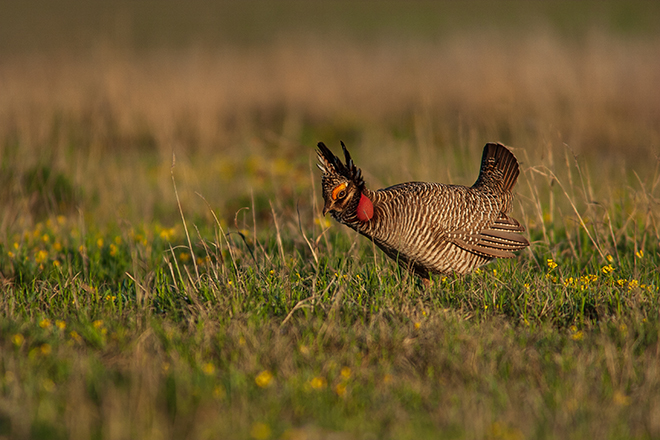
Photo by Chad Love
I may be successful on my hunt, or I may not. The actual taking of birds is immaterial to me. I don’t hunt prairie birds because I want to bag prairie birds. I hunt prairie birds to connect — in some small way — with what they represent. And what they represent is the staggeringly important, yet tragically unheralded environmental soul of our nation.
Grasslands. No matter what you call them; plains, prairie, uplands, savanna, sagebrush steppe; or where they are found, grasslands are our national cathedral of space, wind, and sky. Yet they have historically suffered the myriad indignities and abuses of our industrialized world virtually without advocacy or protest or concern. Why? Why are our grassland regions and the amazing diversity they support so devoid of public thought, public concern, public protection?
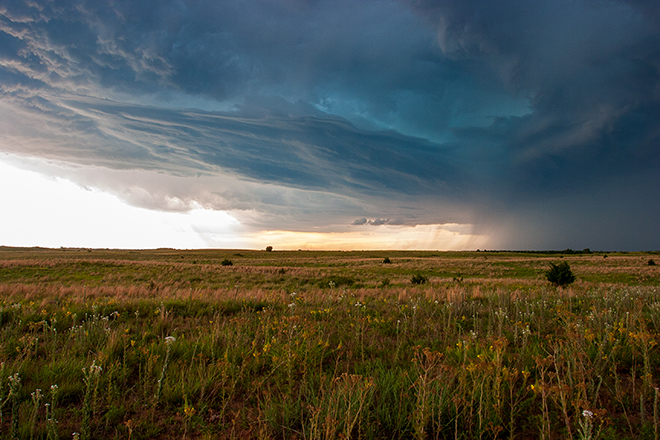
Photo by Chad Love
Perhaps it is the illusion that our grasslands haven’t changed that much. After all, to the casual observer grass is grass, right? If you look out over a landscape that historically was devoid of trees and mountains, and that landscape is still largely devoid of trees and mountains, then what, really, is different?
As it turns out, virtually everything. Grasslands may look like a monoculture, but in fact they are incredibly diverse ecosystems that support a dizzying array of plant and animal life, each one uniquely suited to and dependent upon the grasslands habitat in which it evolved.
And if you take away all those little pieces that make up the whole and replace it with just a few pieces of something else, then you lose the whole. What you are left with is not what it once was.
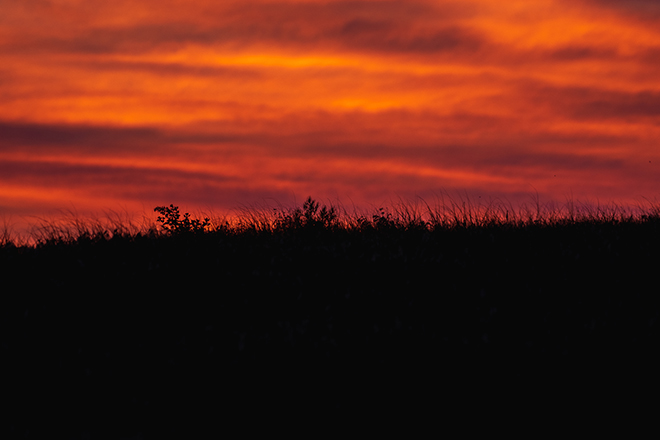
Photo by Marissa Jensen
And we are losing all those little pieces at an astonishing — and accelerating — rate.
By most accounts, North America has lost almost three-quarters of its grasslands and prairies. In just the past 10 years we’ve lost an estimated 53 million acres of grassland habitat in the Great Plains region alone. Think about that: in the span of a single bird dog’s lifetime, we’ve lost an area the size of Kansas.
According to a landmark 2019 report on the state of grassland birds released by the National Audubon Society, overall grassland bird species have declined by over 40 percent since 1966, and some species have declined even more.
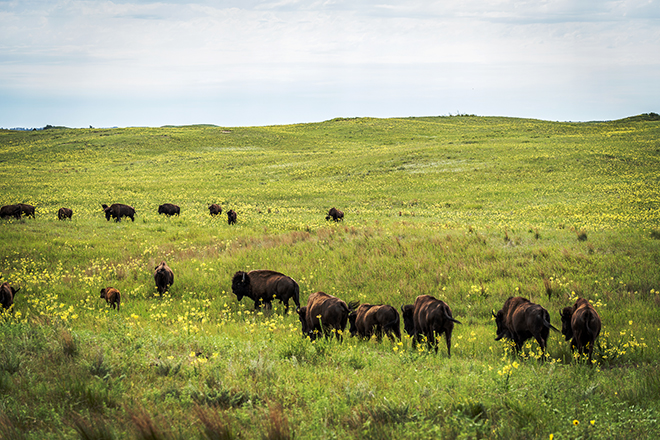
Photo by Marissa Jensen
But we haven’t just lost birds, or land, or grass, or places to make memories and watch our dogs run. We’ve also lost a part of who we are. I’ll give you an example...
I live in Oklahoma, in the middle of the southern plains. I can step outside my back door after a prairie thunderstorm and smell the wet sand-sage wafting in the fresh, rain-scrubbed air. Yet I must travel north to hunt prairie grouse like sharptails and prairie chickens. I assumed it was always this way.
But one day, as I was perusing an old 1941 edition of a pamphlet published by the Oklahoma Game and Fish Department (now called the Department of Wildlife Conservation) that I had found in a bookshop, I read a passage that described a small, but most definitely present-at-one-time population of both sharp-tailed grouse and sage grouse in Oklahoma.
.jpg.aspx)
Photo by Chad Love
I was floored. Oh, I knew all about Oklahoma prairie chickens, of course. But I had no idea, no idea at all, that those lonely sagebrush hills where I now follow the dogs in pursuit of my beloved bobwhite quail once held sharptails, and sage grouse, too. The very birds that I am now preparing to go hunt 400 miles north were once here, where I live hard up against the 100th meridian in northwest Oklahoma’s sand-sage prairie. Imagine that.
Can a land hold some vestigial memory of what once was but is now gone never to return? I believe so. Our grasslands are at once our most magnificent and tragic place, a region crowded with ghosts that linger on just beyond the conscious periphery of memory. I can feel them all around me whenever I walk across this landscape and imagine what — and who — came before me.
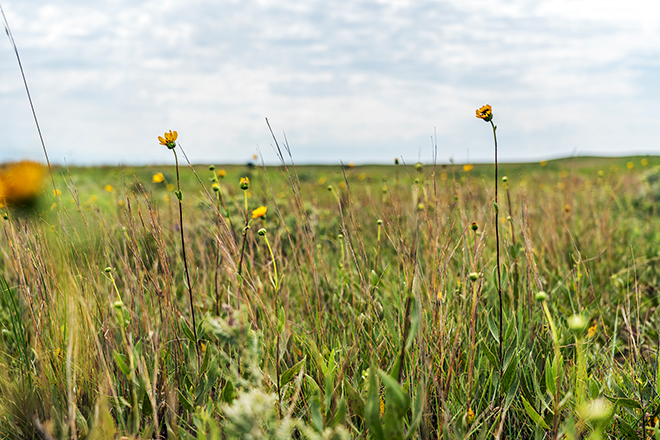
Photo by Marissa Jensen
And it's fascinating, in a decidedly bittersweet way, to imagine that in addition to all the indigenous peoples, homesteaders, cowboys, trappers, explorers, bison, wolves, bears, elk, mastodons and everything and everyone else that left an imprint in this swirling dust before me, I now know there are two more ghosts out there walking these plains, two more faint and dimming after-images of what was once a bright and searing now.
Will I ever see sage grouse or sharptails in Oklahoma again? Will they ever contribute to the character of this land, add to its sense of place and history? Sadly, no. But we have the power to ensure that what still remains will always remain, and perhaps even reclaim some of what was lost.
We can do it. We know we can because it’s been done before. The North American Wetlands Conservation Act was enacted 30 years ago in response to the exact same alarm bells that are now ringing for our grasslands. Since its inception in 1989, NAWCA has helped protect almost 30 million acres of wetland habitat. Due to a combination of awareness and programs like NAWCA, wetland bird species have not experienced as steep a decline as grassland birds have.
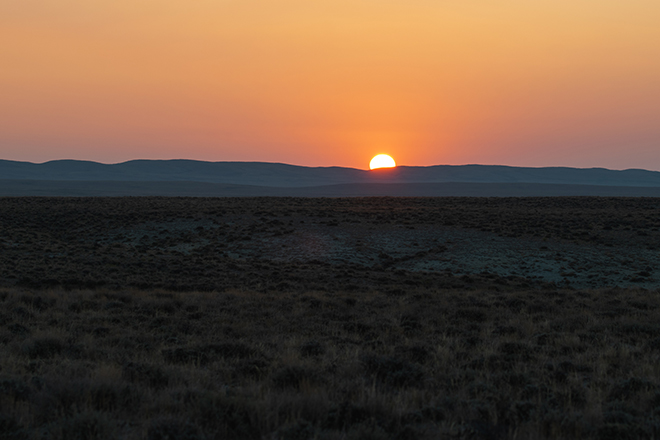
Photo by Marissa Jensen
That’s the power of awareness and action, and that’s exactly what a North American Grasslands Conservation Act could do for our most imperiled, most overlooked, and most critically important landscape. We need a national, landscape-level initiative to save our grasslands.
Lose the grasslands, and we lose everything they represent and everything that depends on them. And if we lose that, we lose ourselves. No matter where or what form your grasslands take, please help us protect them, for there is no solace like the solace of space and light and distance and solitude.
Chad Love is editor of Quail Forever Journal. To learn more about the National Grasslands Conservation Act, visit www.actforgrasslands.org